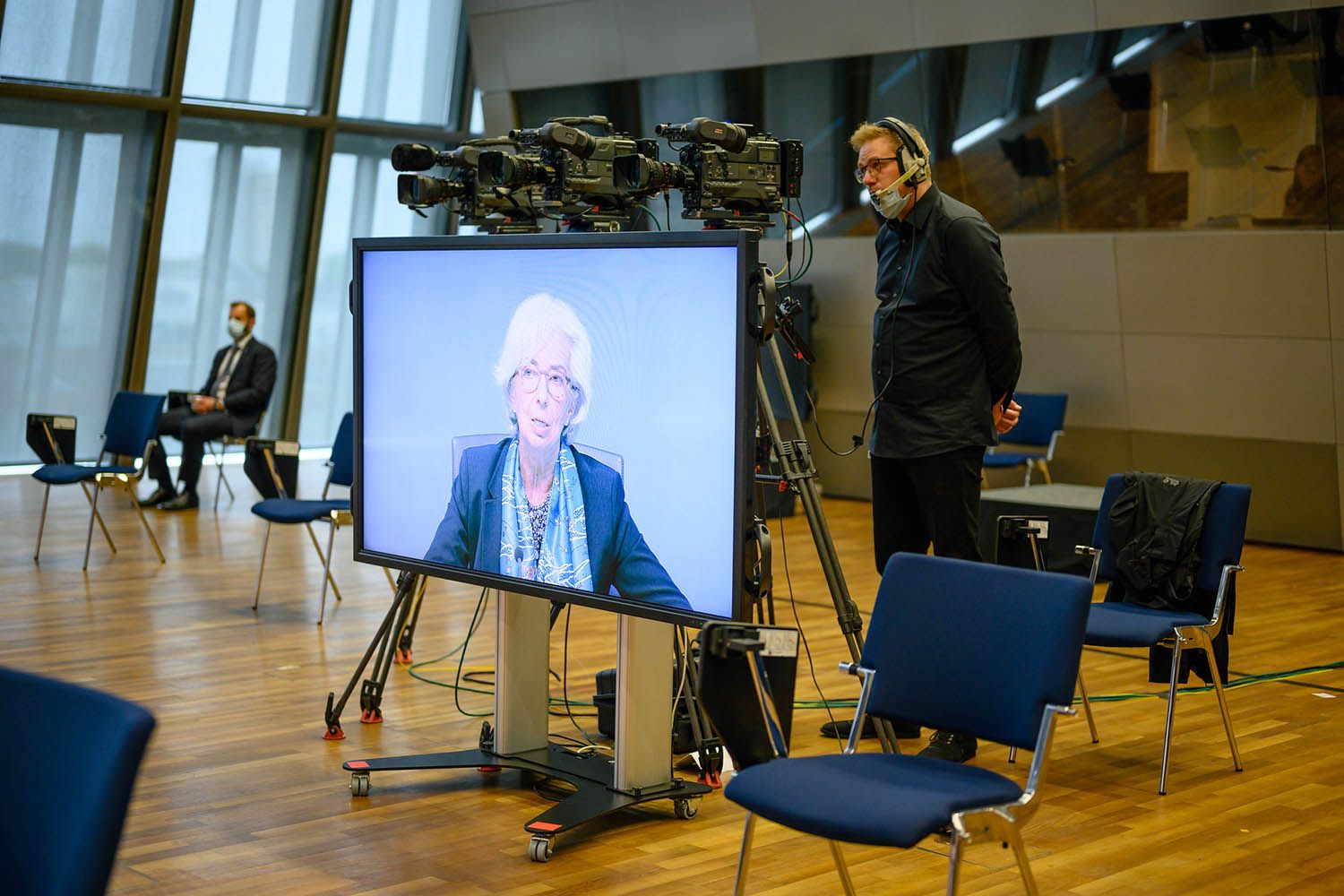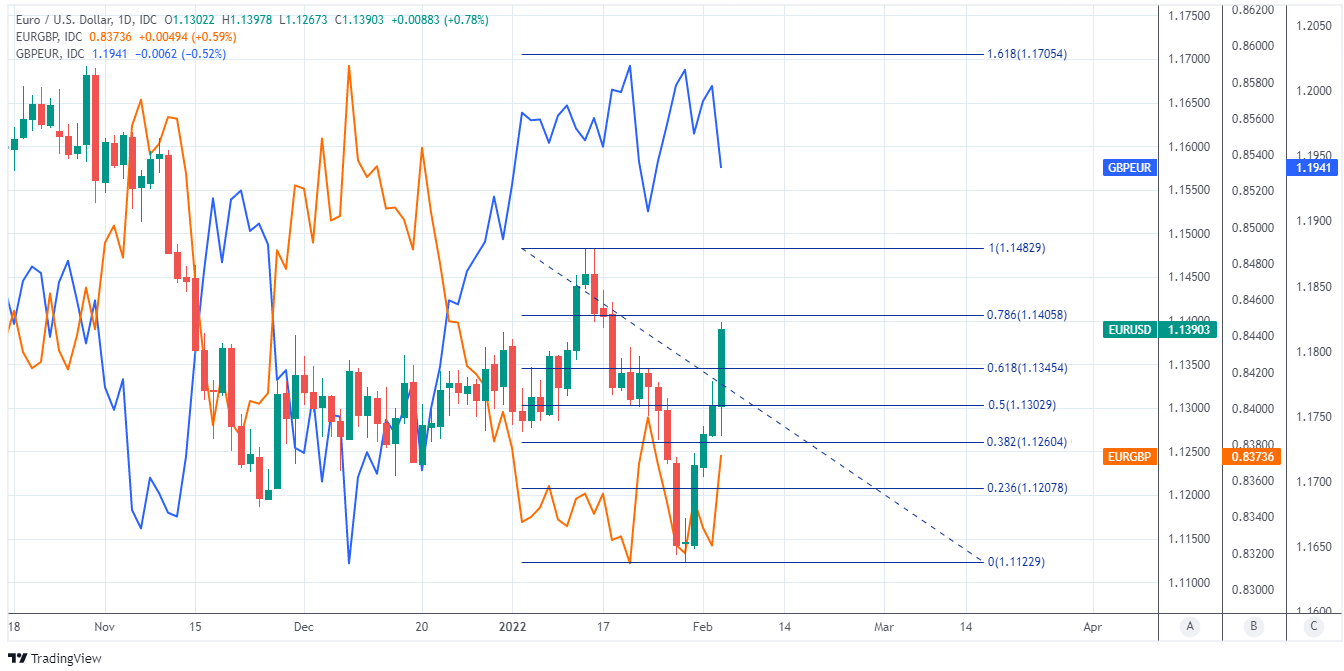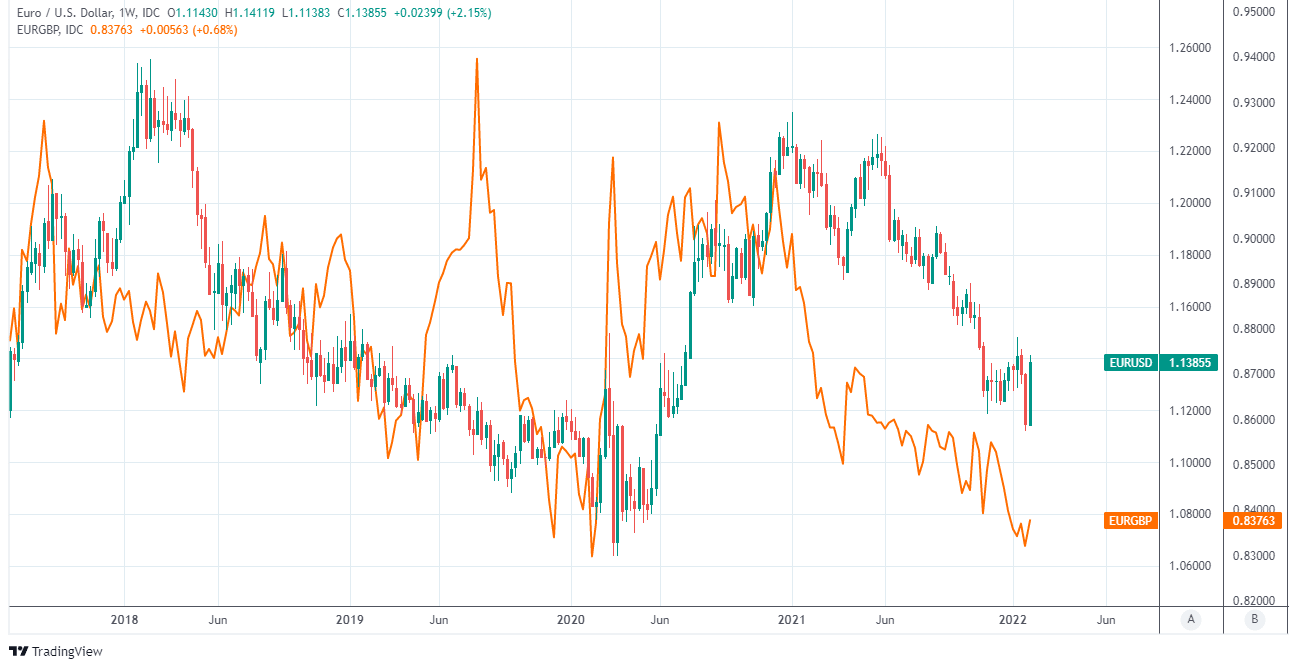ECB Triggers Euro Surge against Pound and Dollar
- Written by: James Skinner
- EUR/USD eyes 1.14 on ECB inflation warning
- Drives rally in EUR/GBP & squashes GBP/EUR
- Hawkish market buying upside inflation risks

Image © European Central Bank, reproduced under CC licensing
The Euro leapt sharply on Thursday, squashing the Pound to Euro exchange rate after the European Central Bank (ECB) warned of upside risks to its inflation outlook in what was seen as a red rag by ragingly hawkish currency and interest rate markets.
Europe’s single currency rose strongly against major currency counterparts including the Dollar and Pound Sterling after ECB President Christine Lagarde told a press conference for the first time that the outlook for Eurozone inflation is highly uncertain and that risks have shifted to the upside.
While the ECB reiterated December’s projection that European inflation rates are “expected but to decline over the course of this year,” President Lagarde said it would be likely“ to remain elevated for longer than was previously expected,” and that the balance of risk is still tilted higher.
The Euro-Dollar rate climbed to within inches of 1.14 as the press conference came to a close after extending an intraday rally that was significant enough to also smother Pound Sterling despite a second interest rate rise from the Bank of England (BoE) being announced just beforehand.
“In view of the current uncertainty we need more than ever to retain flexibility and optionality in the conduct of monetary policy,” President Lagarde also said from the podium in Frankfurt.
Above: EUR/USD shown at daily intervals alongside GBP/EUR and EUR/GBP. Fibonacci retracements of January decline indicate possible areas of technical resistance to further recovery.
- Reference rates at publication:
GBP to EUR: 1.1920 - High street bank rates (indicative): 1.1600 - 1.1686
- Payment specialist rates (indicative: 1.1813 - 1.1860
- Find out more about specialist rates and service, here
- Set up an exchange rate alert, here
President Lagarde’s statement came after the Governing Council confirmed its December decision to end the ECB’s €1.85 trillion Pandemic Emergency Purchase Programme in March following a widely expected vote to leave all of the ECB’s interest rates unchanged.
Rates charged or otherwise paid on the ECB’s main refinancing operations, marginal lending facility and bank deposit facility were unchanged at 0.00%, 0.25% and -0.50% respectively, although prospects for an eventual increase may have improved with the ECB’s latest assessment of inflation risks.
"Lagarde previously had said any hike this year was unlikely. She stumbled on at least 2 direct questions about this and did not repeat that it is ‘unlikely’ the ECB will raise rates this year,” says Neil Wilson, chief market analyst at Markets.com, in an update to clients following the conference.
{wbamp-hide start}
{wbamp-hide end}{wbamp-show start}{wbamp-show end}
ECB guidance derived from is new monetary policy strategy announced last year requires that Eurozone inflation rates be envisaged at or above the symmetric two percent target well before the end of the bank’s forecast horizon and also stipulates that price growth must be running at or above target by the end of the horizon before the Governing Council would vote to lift interest rates.
With the bank’s assessment around the balance of risks shifting that particular set of forecasts may not be quite as far away as it may have seemed even only recently in December, although before any such decisions are taken on the bank’s interest rates it would first need to wind down its original Asset Purchase Programme of quantitative easing which is currently set to continue long after the PEPP programme ends in March.
“More slowly than the US Fed and the Bank of England, the European Central Bank (ECB) is also shifting its stance in response to the sustained inflation overshoot,” says Holger Schmieding, chief economist at Berenberg.
Above: EUR/USD shown at weekly intervals alongside EUR/GBP.
Secure a retail exchange rate that is between 3-5% stronger than offered by leading banks, learn more.
“Amid what seems to be a controversial internal debate, the hurdle for the ECB to raise rates this year remains high, though. The proverbial doves at the ECB can still argue that inflation looks set to decline from March 2022 onwards unless energy prices, Chinese lockdowns or other factors deliver a new shock,” Schmieding wrote in a briefing to clients following the press conference.
The ECB’s assessment of inflation risks has shifted after Eurostat said on Wednesday Europe’s main inflation rate likely edged higher from 5% to 5.1% in January, surprising sharply on the upside market expectations for a decline to 4.4% and also raising eyebrows on the ECB’s Governing Council of policymakers, which had looked for continental inflation to peak around the turn of the year.
This and Thursday’s statements from President Lagarde likely leave the market looking keenly toward the next volley of inflation numbers due in early March, and could potentially lead to speculation in some parts about a possible accelerated scaling back of the ECB’s Asset Purchase Programme later in the year, which would be a precondition of any eventual decision by the bank to raise its deposit rate.
“In short, the ECB is now setting the stage for the announcement of a quicker than anticipated slowdown in QE, probably ending in Q3, potentially paving the way for a rate hike in Q4,” says Claus Vistesen, chief Eurozone economist at Pantheon Macroeconomics
“At this point, we see little reason to believe that the numbers will offer any relief over the next few weeks before the cut off the March forecasts. That said, we still doubt the ECB will go in Q4. We are now inclined to look for the first hike in January 2023, by 20bp, with 10bp in March and June, respectively,” Vistesen and colleague Melanie Debono said in a note to clients on Thursday.







